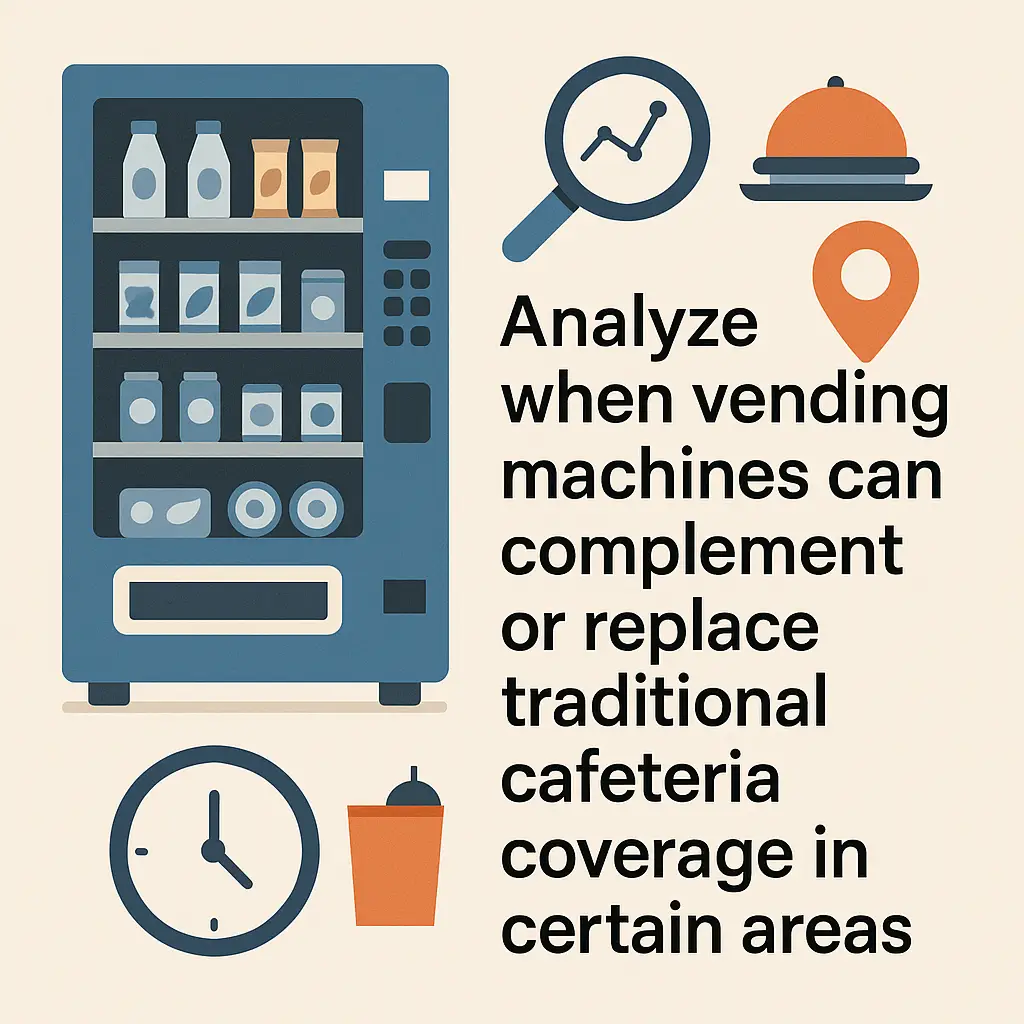Vending vs. Cafeteria Services in Hospitals
Analyze when vending machines can complement or replace traditional cafeteria coverage in certain areas or hours.
Back to Vending for Healthcare ResourcesAnalyze when vending machines can complement or replace traditional cafeteria coverage in certain areas or hours.
Back to Vending for Healthcare ResourcesVending works best in late-night hours, remote wings, or areas where staffing cafeterias isn’t practical.
![]() Vending provides access when cafeterias are closed or understaffed
Vending provides access when cafeterias are closed or understaffed
![]() Machines fill coverage gaps in areas without cafeterias
Machines fill coverage gaps in areas without cafeterias
![]() Lower operating costs compared to full cafeteria staffing
Lower operating costs compared to full cafeteria staffing

Hospitals often face the challenge of balancing traditional cafeteria operations with the need for round-the-clock access to food and beverages. While cafeterias are a central hub for staff and visitors during peak hours, they are not always open late at night or in remote areas of large healthcare facilities. This is where vending solutions can complement or even replace cafeteria services under certain circumstances.
Many hospitals run cafeterias on set schedules, leaving night-shift employees and late-night visitors with limited options. Vending machines provide 24/7 access to food and beverages, ensuring consistent availability regardless of cafeteria hours.
Cafeterias are usually centralized, which can make it inconvenient for staff or patients located in different wings or buildings. Placing vending machines in strategic locations helps fill coverage gaps, particularly in waiting areas, staff lounges, or emergency departments.
Operating a cafeteria requires staff, food preparation, and maintenance costs that may not be justified in all situations. In contrast, vending machines deliver essential snacks and drinks with significantly lower overhead. Hospitals can support patient and staff needs without incurring the expense of extended cafeteria operations.
Modern vending solutions go beyond chips and sodas. Hospitals can offer healthy items, shelf-stable meals, and beverages tailored to staff and visitor needs. Machines with contactless payment and smart technology ensure convenience and hygiene.
Rather than replacing cafeterias entirely, vending can serve as a complementary solution. By combining the two approaches, hospitals create a flexible system that covers both high-demand daytime service and low-demand off-hours access. For more insights, you can explore resources on touchless vending technology and the importance of clear vending contracts to strengthen operational planning.
If you're exploring vending options for your business, Vending Exchange can help simplify the process. Delivery, Installation and Equipment is provided at no cost to you - vendors provide the machines, keep them stocked, and handle all servicing. Whether you need a provider or full-service management, just fill out the form on this page to get started.
Cafeterias often close at night, while vending machines provide 24/7 access.
Remote wings, waiting rooms, and staff lounges often lack cafeteria coverage.
Yes, vending machines have lower operating costs and require no staffing.
Not always, but they can supplement cafeterias where full service isn’t practical.
Yes, many include water, low-sugar drinks, and nutrient-rich snack options.
They provide quick meals and drinks during hours when cafeterias are closed.
Most support mobile wallets, contactless cards, and cashless transactions.
Yes, they fill gaps without requiring extra cafeteria staff during slow hours.
Yes, shelf-stable and packaged meals can be included for convenience.
Visitors gain access to food and drinks at any time, even after cafeterias close.